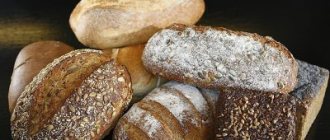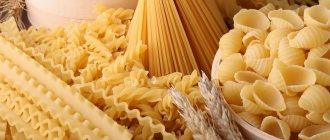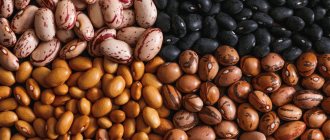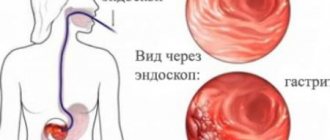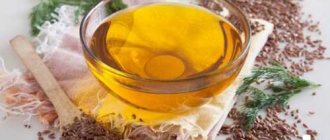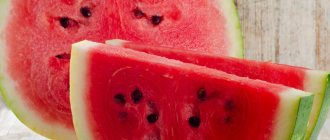Patients suffering from inflammation of the gastric mucosa often ask questions: what is acceptable to eat, and what should be avoided? One of these questions is: is it possible to eat dumplings for gastritis, and what are the dangers of eating such a dish?
Gastroenterologists and nutritionists have their own opinions on this matter. And even if you really want dumplings, in modern medicine it is unlikely to find a diet in which they are allowed.
Important: With both high and low acidity, the patient must adjust his diet independently or contact a gastroenterologist for recommendations regarding diet. This is necessary to achieve maximum unloading of the digestive tract.
Is it possible to eat dumplings with gastritis?
With gastritis, the patient has to monitor his menu very carefully. The diet should not contain spicy, fried, fatty foods. Such food irritates the inflamed walls of the stomach and is difficult to digest.
But can people with gastritis eat dumplings or not? It is impossible to answer unequivocally, since the type of disease and its stage must be taken into account. So, if the disease is acute or an exacerbation of a chronic type of disease occurs, then the answer to the question of whether dumplings can be eaten is negative.
During this period, such food is strictly prohibited. Firstly, minced meat and boiled dough are difficult to digest. Secondly, when preparing the filling, products such as onions and garlic, as well as hot spices, are used.
In addition, many people prefer to eat dumplings with vinegar or spicy tomato sauce. Such food will have an irritating effect. It is especially dangerous to eat food that irritates the stomach if erosive gastritis is diagnosed.
With this type of disease, including hot and sour spices in the diet can lead to severe pain. Is it possible to eat dumplings with gastritis if the disease does not bother you? During this period, you can occasionally treat yourself to your favorite dish, but with certain reservations, namely:
- Only homemade dumplings are allowed, since there is no way to find out what ingredients are used in the semi-finished products sold in the store. Most often, they contain additives that are unacceptable for patients;
- Only lean types of meat are suitable for preparing minced meat; there is no need to add lard or fat.
If you cannot give up your favorite dish, there are several recommendations on how to cause minimal harm to the body: Be sure to cook the dumplings yourself. Store-bought products that are stuffed with chemicals and other additives are a taboo for people suffering from digestive system disorders. For the filling, use only lean chicken, beef, veal or rabbit. To make the dish tastier, make a mix of two or three types of minced meat.
When preparing the dough, do not use more than one egg. It is preferable to eat only boiled dumplings, forget about frying. Avoid mayonnaise and spicy seasonings. It is allowed to add a small amount of salt, but be careful. If you follow the above recommendations, you can treat yourself to dumplings once or twice a week.
With high acidity
For gastritis with high acidity, dumplings can sometimes be served to the patient. But, firstly, it must be a home-cooked dish, made taking into account the rules indicated above. Secondly, you can’t afford your favorite dish every day.
But the main rule is that you can indulge in small quantities of dumplings only during the period of remission. If the patient experiences pain, feels nauseous and often experiences heartburn, then eating the dish will only worsen the state of health.
Low acidity
Is it possible to eat dumplings with gastritis if the disease occurs with a low level of acidity? With this type of disease, it is better to completely exclude the dish. The combination of dough and minced meat is “heavy” and requires a lot of enzymes to digest.
And when the level of secretion decreases, it will be extremely difficult for the stomach to cope with digestion. As a result, the organ will literally work for wear and tear. This can lead to the development of another exacerbation.
Dumplings and acute gastritis
Acute gastritis appears when the gastric mucosa is damaged by a bacterial or viral infection or when poisoned by low-quality products or toxins. In an acute process, the mucous membrane needs complete rest at first, so the patient can expect a day of complete fasting. During these days, only water is allowed.
If the dynamics are positive, on the second day the patient is offered a rosehip decoction or unsweetened tea. Another day later, porridge and mucous first courses with water are introduced into the patient’s diet. In the following days, the person eats pureed food without salt and spices. All products are either boiled or steamed. Eating dumplings with acute gastritis is unacceptable.
Dumplings for chronic gastritis
For any form of gastritis, eating dumplings, dumplings and cutlets is undesirable. Recent nutritionists recommend replacing it with steamed meatballs. As for dumplings, you should always remember: their use can lead to an exacerbation of a chronic process, so it is recommended to eat dumplings infrequently, adhering to certain rules:
- Semi-finished products are unacceptable - they contain excess salt, spices and preservatives;
- dietary meats are used to prepare homemade dumplings;
- the filling for the dish is only lightly seasoned;
- The dough is kneaded only with water.
Dumplings are served warm without spicy or fatty sauces. But even if all these rules are followed, they can be eaten only during the period of remission, when the patient has no complaints of flatulence, heartburn, constipation and abdominal pain.
Is it possible to have dumplings for gastritis: with potatoes, cottage cheese, cherries?
Dumplings are one of the most favorite dishes of children and adults.
It is nourishing and tasty, it can have completely different fillings, which pleases lovers of variety, but many find it difficult to say whether dumplings are possible for gastritis.
If this dish is included in the list of permitted ones, then it is worth finding out which filling is best to prepare the dish with, so that it does not harm the gastrointestinal tract and is beneficial.
You can prepare dumplings with both salty and sweet fillings, adding different sauces or just sour cream to them. But you need to be careful with the menu for gastritis, therefore, how and with what to eat such a dish as dumplings, and whether it can be consumed at all, is worth finding out.
When asked whether dumplings can be eaten for gastritis, one can hear far from ambiguous answers. To understand which of the many assumptions is considered correct, it is worth considering different types of dumplings, specifying which ones you can eat and which you should refuse.
And so, most often, housewives prepare dumplings with cottage cheese, potatoes, cherries or cabbage. They are boiled in boiling water (if we are talking about options with a sweet filling) or steamed.
With cherry
If a person with gastritis has low acidity, then even the vitamins contained in cherries will not save them from exacerbation. In addition, cherries can make your stomach bloat, which is already unpleasant, and with gastritis, it will not be the most desirable phenomenon. Therefore, it is not recommended to eat dumplings with cherries if you have gastritis!
With potato
Dumplings with potatoes, if you eat a small portion once a week, will saturate the body, a person will not feel so hungry. If the disease becomes quite serious, then you can add potatoes to lazy dumplings, which can be consumed for gastritis.
With cottage cheese
Fermented milk products have a beneficial effect on the gastrointestinal tract, so dumplings with cottage cheese and gastritis are a completely compatible combination. Again, if you can’t cook them in the usual way, you can make lazy dumplings, which nutritionists and gastroenterologists allow you to eat.
With cabbage
Cabbage is a food that is too difficult to digest, so people with gastritis are advised to stay away from it, especially when stewed or fried. Once again, you shouldn’t even make fresh salads with this vegetable.
| Variety of dumplings | Is it possible with gastritis? | Why you can or cannot eat the dish |
| With cherry | It is forbidden | Cherries provoke bloating and promote the release of hydrochloric acid. |
| With potato | Can | Small quantities are acceptable. Avoid spices and fried onions in the filling. |
| With cottage cheese | Can | Cottage cheese has a good effect on the gastrointestinal tract, but it is not recommended to abuse it. |
| With cabbage | It is forbidden | Cabbage is difficult to digest, which means it will require the release of a large amount of hydrochloric acid. |
Having found out what filling is allowed in standard dumplings, we can talk about why lazy dumplings are an excellent alternative to all the varieties of this dish presented above.
Important! If you have gastritis, you can only eat homemade dumplings, since they do not contain chemicals, various dyes and similar additives that sick people should not consume.
Lazy dumplings for gastritis are just an ideal option. You can add potatoes or cottage cheese, butter, a little flour, a minimal amount of salt and spices to this dish.
Such dumplings will be very useful for the digestive system and can slightly alleviate the patient’s condition.
To prepare suitable lazy dumplings, you need to follow the following algorithm:
- take half a kilogram of cottage cheese for a glass of flour;
- add 2 tablespoons of sugar and mix the ingredients;
- add 3 tablespoons of butter and 1 egg, a little salt;
- knead the dough, form small dumplings and throw them into hot water for a couple of minutes.
Dumplings prepared according to this recipe can be safely eaten with low-fat sour cream.
If a person has gastritis with high acidity, then he is strictly forbidden to eat dumplings with cottage cheese, cherries, cabbage or meat.
Foods with high acidity will further irritate the walls of the stomach, causing a person to feel pain and other discomfort.
In addition, poor nutrition can cause serious aggravations, which can subsequently lead to problems such as stomach ulcers.
The recipe for any dumplings can be called simple and as accessible as possible, so they are often prepared at home. If a person has gastritis with low acidity, then doctors allow this dish. The main thing when eating dumplings for gastritis is to follow these rules:
- do not cook store-bought dumplings;
- make the dumplings small enough;
- do not eat the dish hot or too cold;
- cook dumplings without spices and excess salt;
- It’s better to make lazy dumplings rather than regular ones.
By following these rules, you can make a dish like dumplings safe for people who have gastritis.
Dumplings are a tasty and satisfying dish that many people enjoy. It doesn’t take a lot of money to prepare it, and if you also use a special device for making dumplings, you don’t need a lot of effort. But with gastritis, dumplings are not allowed to be consumed with all sauces, fillings and spices. You need to cook dumplings with potatoes or cottage cheese, and best of all, lazy ones.
Of course, you can’t eat dumplings hot or cold either, you need to carefully monitor this, the dish should be chewed thoroughly so that it does not harm digestion, and you should absolutely not use store-bought, frozen versions.
If you cook and eat dumplings correctly. If you have gastritis, they will not do any harm, the main thing is not to overdo it with the portion size, because overeating is clearly not good for anyone.
What type of disease can be added to the menu?
An acute form of stomach inflammation requires the most gentle, easily digestible nutrition. The product clearly does not belong to this category. You can try dumplings in small quantities only after the onset of stable remission, in the absence of symptoms of gastritis.
With hyper- or normoacid gastritis, eating dumplings is possible provided you feel well. Of course, you shouldn’t overuse them, but allowing yourself a small portion of dumplings a couple of times a week is quite acceptable.
The situation with dumplings is somewhat more complicated: here it all depends on the type of filling. You can try dumplings with cottage cheese and potatoes. It is better to abstain from mushrooms and berries with high acidity; they will only further reduce the pH of the gastric contents.
Eating dumplings with hypoacid gastritis is usually not recommended. They are poorly digested if the hydrochloric acid content is low and can cause heaviness in the stomach, nausea and belching. During the remission stage, it is possible to eat dumplings with dietary meat (rabbit, chicken, turkey) or fish in small portions.
Dumplings should also be limited, but not completely excluded. You can try products with curd and berry filling. The most preferred berry is cherry. Dumplings with potatoes and mushrooms are considered a difficult-to-digest product and should be set aside.
Atrophic gastritis “dislikes” dumplings more than others. In this case, not only the production of hydrochloric acid is reduced, but also various enzymes of gastric juice necessary for the processing of proteins and fats. So in this case, it is better to abstain from dumplings, and choose dumplings with cottage cheese and berries.
Dumplings with high and low acidity
Not every patient understands the fundamental difference between low and high acidity. However, this characteristic is very important when creating a nutrition menu. So, for example, with high acidity, properly prepared dumplings without spices and sauces are digested by the patient’s stomach quite easily and quickly. But with low acidity, numerous problems can arise. This is explained by the fact that it is quite difficult for the stomach to digest this product, and as a result, the enzyme cells work for wear and tear.
All this leads to indigestion. That is why it is extremely important to undergo diagnostics and understand what level of gastric acidity accompanies the course of gastritis.
Important: In the stage of exacerbation of gastritis, eating dumplings, manti, and khinkali is completely unacceptable. The ban on these dishes does not depend on whether the patient has excessively low or high acidity.
Before you decide to eat your favorite dumplings or other products made from boiled dough, it would be a good idea to get a preliminary consultation with your treating gastroenterologist. This will make sure how justified the balance of benefit and harm is.
https://youtu.be/5osND90dpGI
Composition and properties
Traditionally, homemade dumplings are made from unleavened dough, which requires flour, water, eggs, salt, and meat filling. Minced beef, pork, and lamb are usually used as filling. Less popular are dumplings made from minced poultry or game meat.
To improve the taste, onions, salt, pepper and other spices are added to the filling.
- wheat flour is a source of B vitamins and niacin (vitamin PP), involved in many redox processes and the formation of enzymes;
- eggs contain animal protein, vitamins A, D, E, B3, B12, as well as minerals: phosphorus, calcium, magnesium, zinc;
- any meat filling is rich in easily digestible protein, B vitamins, macro- and microelements necessary for full life;
- salt, a source of sodium, regulates the water-salt balance in the body, but its abuse is dangerous for the heart, liver and kidneys.
You need to be especially careful with store-bought semi-finished products. The composition of such a product may differ greatly from dumplings prepared at home.
In their production on an industrial scale, synthetic additives (flavors, emulsifiers, dyes, preservatives) are often used; minced meat for the filling is prepared from low-quality meat (second grade) or is replaced with soy.
Eating such a dish is not beneficial even for a healthy person. In case of chronic diseases of the gastrointestinal tract, exacerbation will be ensured.
How is cottage cheese useful?
The benefit of this fermented milk product lies in the fact that it is obtained by fermentation. This process involves lactobacilli, which have a beneficial effect on the state of the human immune system and the functioning of the gastrointestinal tract, including the stomach, which often malfunctions with gastritis. Cottage cheese also contains a large amount of protein, which is a building material for muscle tissue.
Additionally, the composition includes:
- vitamin A, which accelerates tissue regeneration;
- tocopherol, which has an antioxidant effect;
- B vitamins, which improve the conductivity of nerve impulses;
- vitamin D, which promotes calcium absorption;
- copper, which accelerates the recovery of mucous membranes, muscles and bones;
- calcium, which strengthens teeth and eliminates the harmful effects of hydrochloric acid on the stomach;
- phosphorus, good for joints and bones;
- zinc, which regulates the functioning of the sebaceous glands;
- fluoride, which strengthens enamel;
- iron, which prevents oxygen starvation of tissues.
For gastroduodenitis, cottage cheese helps get rid of a burning sensation in the stomach.
How to choose high-quality semi-finished products?
If you don’t have time to make dumplings yourself, but you really want to snack on them, occasionally consuming an industrially produced product is allowed.
But you should always carefully read the information on the label about the composition, category and manufacturer of the product! The name and price category do not always matter when choosing.
The packaging of quality dumplings always states:
- category A or B (the content of minced meat is 80 and 70%, respectively);
- In the list of ingredients, meat should come first, not flour;
- good dumplings do not contain vegetable protein;
- all spices included in the composition must be indicated; without decoding, the word “spices” refers to monosodium glutamate, flavorings and emulsifiers.
The dumplings in the package should not be stuck together or melted, otherwise such a product can be dangerous for poisoning.
Advice from the manufacturer
If you do not have the opportunity to make homemade dumplings, then the following instructions are just for you.
In general, according to GOST (semi-finished meat and meat-containing products), semi-finished products are divided into categories depending on the percentage of muscle fibers in the filling.
- Category A (more than 80%)
- Category B (60-80%)
- Category B (40-60%)
- Category G (20-40%)
First nuance: Semi-finished products are divided into categories not depending on the meat content, but on the muscle fiber content.
That is, skin, fat, lard, sinews - all this does not belong to muscle fibers, and therefore does not count.
Second nuance: Category A is difficult to find because less than 20% is left for the rest of the filling. And this includes: salt, spices, onions.
So, when we started making dumplings, I also wanted to make category A. But they turn out tasteless. But they were tasteless because there weren’t enough onions to make them juicy. And buyers asked to make it juicier. They started adding more onions - and everyone immediately liked everything. Although dumplings have formally become category B.
Therefore, in this case, category A, although it is an indicator of quality, is inferior in taste to category B. Such is the paradox.
Dumplings are not included in any medical diet, although the product itself is healthy: rich in nutrients, minerals, vitamins, satiates well and for a long time. The combination of meat and dough is difficult for the digestive system, but inflammation of the gastric mucosa is not a reason to give up your favorite dish if you know the secrets of its preparation and use it correctly.
In moderation, homemade dumplings will not harm the body, but during an exacerbation, strict adherence to the diet prescribed by the attending physician is recommended.
Contraindications
There are several recommendations that patients with gastritis must adhere to:
- It is forbidden to eat foods that are difficult to digest during an exacerbation;
- You should not eat this dish if the disease occurs with a decrease in the level of secretion;
- You can’t eat store-bought semi-finished products;
- When preparing and serving the finished dish at home, you need to exclude foods that are prohibited for consumption - hot spices, garlic, onions, vinegar, etc.
So, dumplings are a dish that is not recommended for stomach diseases. However, if the disease has gone into remission, then you can sometimes include this dish in your diet, but not more than 1-2 times a month. Moreover, you only need to prepare dumplings at home from dietary types of meat without onions and hot spices, and the serving should be no more than 12-15 pieces.
When can you eat dumplings?
Dumplings are not included in the menu of people with gastrointestinal pathologies. Their use is permissible only in extreme cases. Occasionally, people with stable remission of hyperacid gastritis are allowed to eat the dish. It is important that the symptoms of gastritis with high acidity do not manifest themselves for a long time (more than 2 months). It is impossible to completely disrupt the nutritional system even in the remission stage: this can cause an exacerbation of the disease.
For gastritis with low acidity, dumplings are prohibited even during remission. In this case, the patient will not have enough enzymes to properly process this dish. Consumption of the product will cause abdominal pain, flatulence and other unpleasant symptoms. Patients with low acidity are recommended to eat dumplings for gastritis. Preference is given to potato filling. Dumplings with cabbage are also prohibited for inflammation of the mucous membranes of the stomach.
What is gastritis?
Gastritis is a disease that occurs due to inflammation of the gastric mucosa. Gastritis causes many painful symptoms. Gastritis is also characterized by indigestion - food that enters the stomach begins to be poorly digested, which leads to moral and physical exhaustion.
Symptoms of gastritis differ depending on how much hydrochloric acid the stomach secretes to digest food, and gastritis itself can be acute or chronic.
Gastritis is a very common disease. Statistics say that almost 40% of Russian residents suffer from gastritis at some stage in their lives, and the disease itself is diagnosed in both adults and children.
Acute gastritis is characterized by short-term inflammation of the mucous membranes, and after some time the inflammation disappears or becomes chronic.
With gastritis, the integrity of the mucous membranes is disrupted, because of this, acids and alkalis (which are found in many products in small concentrations) can damage the integrity of the stomach tissue, which can lead to severe disorders.
The following symptoms appear with gastritis:
- The main symptom is acute pain in the solar plexus. The pain intensifies after taking certain types of food, liquids and medications that contain acids, alkalis and other aggressive substances (normally the mucous membrane protects the stomach from these substances, but with gastritis this protection disappears, which leads to pain). Sometimes the pain intensifies between meals.
- Also, with gastritis, heartburn, vomiting and belching very often appear. Other symptoms may also appear - bloating, frequent passing of gas, and so on.
- Chronic gastritis has its own characteristic symptoms. Usually, with chronic gastritis, pain in the abdominal area does not appear after eating. With chronic gastritis, the following unpleasant symptoms appear - constipation, diarrhea, frequent passage of intestinal gas, anemia, drowsiness, slight increase in temperature, cold sweat, drowsiness, fatigue, irregular bowel movements, and so on.
- Also, the symptoms of gastritis depend on the concentration of hydrochloric acid in the stomach. With increased acidity, the following symptoms may appear - unpleasant belching, pain in the solar plexus when eating, diarrhea, heartburn after eating sour foods, vomiting, nausea, and so on. With low acidity, the following symptoms may appear - a characteristic metallic taste in the mouth, heaviness in the stomach after eating, a characteristic unpleasant belching, the smell of which resembles the smell of rotten eggs, morning sickness, problems with bowel movements, constipation, nausea, and so on.
- Severe forms of gastritis are characterized by the following symptoms: vomiting blood, black or gray stool, pale skin, dizziness, tinnitus, fatigue, weakness, and so on.
- In some cases, gastritis (both acute and chronic) can be asymptomatic, which complicates diagnosis and treatment.
Today, there are many therapeutic methods that can partially or completely cure gastritis.
Treatment involves taking medications that kill pathogenic bacteria and restore the integrity of the mucous membranes of the stomach.
The patient is also prescribed a special diet, from the diet it is necessary to exclude sour, salty and fatty foods, as well as alcohol, carbonated drinks, sweets, various foods containing a large number of artificial additives, flour products, some vegetables and so on.
Benefits and harms
Only those dumplings that are prepared at home have benefits for the body. Healthy people can eat this product with sauces and seasonings. Homemade products are a source of protein and microelements necessary for the human body.
In addition to individual intolerance to the components of dumplings, some other restrictions on consumption can be noted:
- It is recommended that people suffering from excess body weight completely exclude the product from their diet. This is due to the high calorie content of the product.
- Flour products in combination with meat are not recommended for patients suffering from diseases of the digestive system, including gastritis. The components of the dish are poorly absorbed when consumed together.
- Dumplings are not recommended for patients with pancreatitis. Taking dumplings for inflammation of the pancreas leads to intestinal upset, manifested by bloating, heartburn and intense abdominal pain.
Among the advantages of the dish is the ability to choose the appropriate filling. For example, patients with gastritis are recommended dietary meats in dumplings - chicken, turkey or beef.
Manti
Steamed manti from lean meats
There is even a recipe for manti with meat, which is suitable for patients with gastritis.
- Knead the same dough as for dumplings.
- Finely chop lean meat. Or even grind it through a meat grinder.
- You can use herbs instead of spices. Not just parsley and dill. Try, for example, rosemary, basil, saffron. Herbs that do not have a “bright” taste or olive oil are suitable. But here again you need to consult a doctor.
- Of course, without seasoning, the dish will not have that piquant spiciness. But you are unlikely to want any spices to cause an exacerbation of gastritis.
- Make manti from minced meat and dough.
- Steam them.
They are big and filling. Don't eat too many of them. A serving of 1 - 2 pieces will be enough.
Thus, to the question whether dumplings are possible for gastritis, we answer positively, but with the condition that they do not contain prohibited ingredients. But before that, consult a gastroenterologist, since diets vary depending on the diagnosis.
Features of use
For gastritis, preference is given to unleavened dough and lean meat. You can use the following recipe: for 1 kg of product take 750 g of wheat flour, 250 ml of water and a pinch of salt. All ingredients are mixed into a stiff dough. Before modeling, it is advisable for the dough to sit for 30-40 minutes to allow the gluten to swell. To prepare minced meat, use dietary meat: veal, rabbit, turkey, beef. The meat is minced without adding onions and black pepper. Seasonings and onions provoke increased production of hydrochloric acid in the stomach, which is undesirable for gastritis with high acidity.
There are 2 ways to prepare dumplings for gastritis:
- Boiling: for 1 kg of products take 4 liters of water and 2 pinches of salt. The product is placed in boiling water and waited for it to float. A dish prepared at home does not require long cooking. Average cooking time is 5-7 minutes.
- Steam cooking. For these purposes, a multicooker, double boiler or mantoshka is used.
Instead of dumplings, you can make manti. It is also important to follow the cooking rules: make the dish from unleavened dough (without adding eggs) and dietary meats. The only difference is that manti is filled with chopped meat, not minced meat.
In order not to provoke an exacerbation of gastritis, important nuances should be taken into account:
- eat dumplings when they have cooled down, since hot food provokes irritation of the walls of the digestive organ;
- do not abuse the product: dumplings should not be included in the daily diet;
- do not refuse to take medications when eating heavy meals;
- eat heavy meals in small portions: no more than 10 medium-sized boiled dumplings are allowed at a time;
- eat the dish together with a large amount of fresh vegetables, as fiber makes it easier to process the product;
- After meals, preference is given to green tea.
People with low stomach acidity who decide to treat themselves to a meat dish should add tomato or apple juice to it. The products will stimulate the production of hydrochloric acid.
Rules for eating the dish
If you want a delicious lunch without consequences, follow the recommendations of gastroenterologists and nutritionists:
- Make dumplings and dumplings yourself, then you will definitely be sure of their quality.
- To reduce stress on the stomach, add whey to the dough.
- Eat dumplings only from dietary meat or fish, dumplings - with cherries, low-fat cottage cheese.
- Avoid hot spices and excess salt.
- Dumplings should not be seasoned with ketchup, mayonnaise, or hot sauce. It is better to use low-fat sour cream or natural yogurt.
- Nutritionists advise eating no more than 20 dumplings at a time, but you need to start trying them with smaller portions: 3-5 pieces.
- It is better to eat dumplings at lunch, during the most active period of the gastrointestinal tract.
- Products must be cooled before use. Excessively hot or cold food has a negative effect on the gastric mucosa.
- The best option is boiled, baked, steamed dumplings. But the stomach can react painfully to fried dumplings.
If, after culinary experiments, your stomach hurts and other symptoms of indigestion appear, then you need to help the body digest the heavy product - take an enzyme preparation like Creon or Mezim.
Then within a few days it is better to switch to a more strict diet.
Important! If self-treatment does not bring results, be sure to consult a doctor.
Recipes for homemade dumplings
Dumplings are a simple dish that can be easily prepared at home, so patients with a chronic form of the disease in stable remission can treat themselves to this delicacy from time to time. But when starting to prepare, it is important not to forget that the dough for dumplings is made fresh and light, and only dietary meat is used for the filling.
Recipe 1
To make about 1 kg of dumplings, you will need 700 g of flour, 1 chicken egg, a pinch of salt and 250 ml of water. Knead these ingredients into a stiff dough and leave it to “rest” for 30 minutes. During this time, the flour gluten will swell and the dough will become more elastic and pliable.
At the same time, minced meat is prepared from dietary meats. To do this, the meat is passed through a meat grinder and added a little salt. The minced meat is used to fill the dough circles or the cells of the dumpling maker.
Formed dumplings can be prepared in two ways. In the first case, pour 4 liters of water into the pan and add a little salt. Place dumplings into boiling water and wait until they float to the surface. Then they are boiled for another 2-3 minutes and removed from the water. In the second case, the dish is prepared by steaming or in a pressure cooker.
Recipe 2
To prepare dumplings according to this recipe, pour 500 g of flour onto a table or board, add a little salt and gradually pour 250 ml of water into the crater formed from it. To ensure the elasticity of the dough, you can pour 1 tablespoon of vegetable oil into it.
The kneaded dough is allowed to stand for about half an hour, after which it is rolled out, circles are cut out with a glass and dumplings begin to be made. Minced meat is made in the same way as in the recipe described above. Finished products are boiled in water or steamed.
Homemade manti
Connoisseurs of Caucasian cuisine can prepare a Georgian dish at home - manti. They differ from the usual dumplings only in size and method of preparation. Another feature of the dish is the use of minced meat for filling.
Usually, onions, garlic, spices and herbs are placed in this filling, but in case of gastritis they are excluded. For minced meat, as a rule, they take lean meat (turkey, rabbit, veal or chicken are suitable) and steam the dish. You can eat manti for gastritis only during stable remission and without fatty sauces (mayonnaise, sour cream).
Dumplings
Prepare dumplings for gastritis yourself.
You will have to make the dumplings yourself.
- First, knead the dough from water, flour and 1 - 2 eggs.
- Leave it for a while. Then roll out and cut.
- Make minced meat from lean meat. Grind it yourself through a meat grinder.
- You can add some chopped herbs (except onions and garlic) to it. No seasonings or spices.
- Make dumplings. It is not necessary to give them a beautiful shape.
- Steam them, but boiled ones are also allowed.
Do not eat dumplings hot or freeze them. Wait until they cool down a little and start eating.
If you eat meat with dough, they will be digested slowly. For a sick stomach, this is a load that it may not be able to handle. Therefore, do not cook such dishes every day. And eat them in very small portions.

